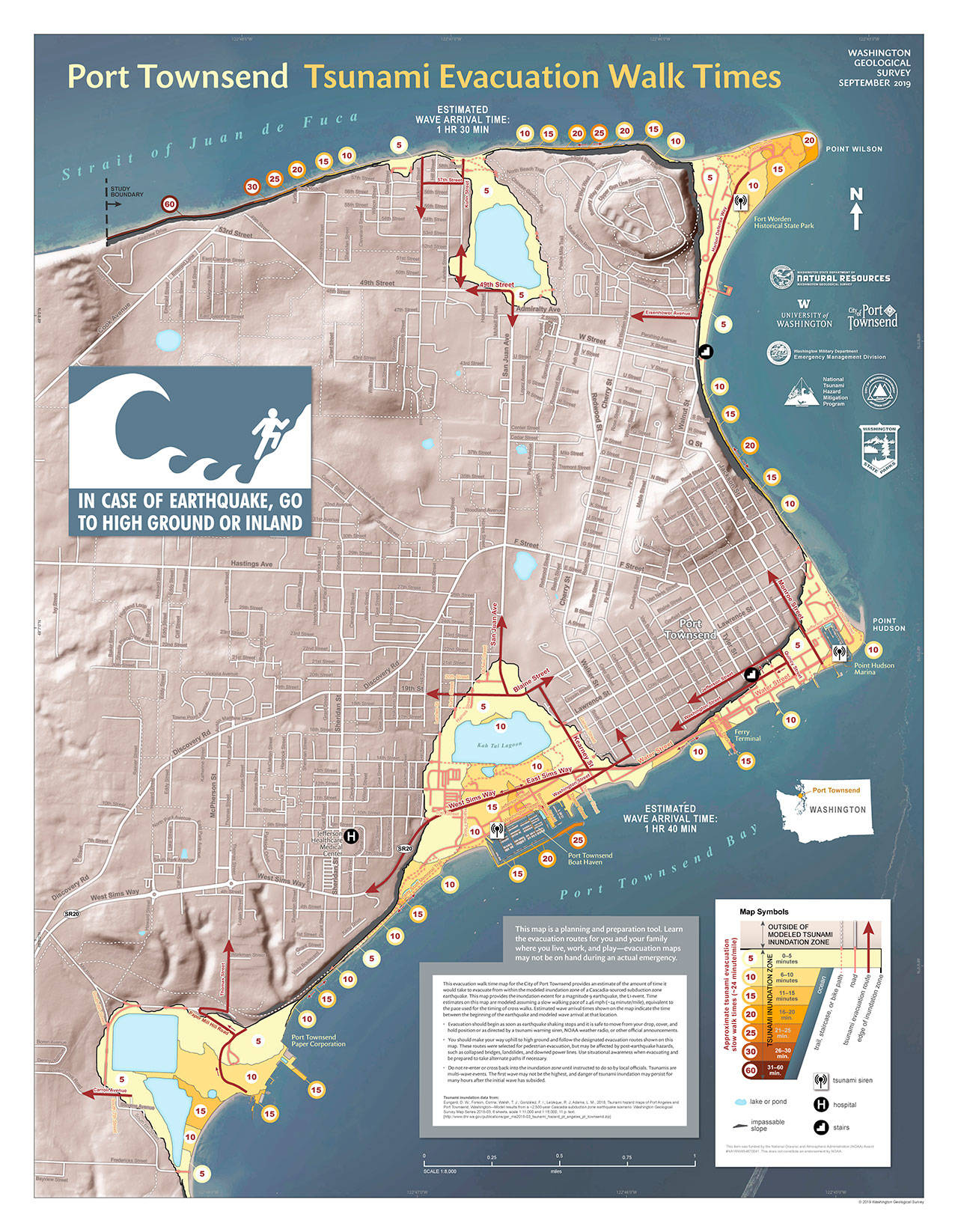PORT TOWNSEND — The state Department of Natural Resources released last week a Port Townsend tsunami evacuation route map that shows the amount of time needed to walk out of a threatened area.
A similar map for Port Angeles was released in April, and video simulations were released by the state in August.
The map shows the time it would take to evacuate on foot from the tsunami inundation zones caused by a Cascadia subduction zone earthquake.
The Department of Natural Resources (DNR) has been compiling these maps for low-lying areas that are at risk of tsunamis for cities around the state’s western coast such as Long Beach and Westport.
More maps are being compiled, said Joe Smillie, communications director for DNR.
“We’re working on the others,” Smillie said. “But we’re focusing on the population centers.”
So far the complete list of walking evacuation maps include:
• Aberdeen
• Hoquiam
• Ilwaco and Cape Disappointment
• Westport
The maps are color coded to indicate how many minutes it would take to walk safely from the inundation zone.
For Port Townsend, it can take anywhere from five minutes to an hour to walk to safety.
In Port Angeles, it is estimated to take anywhere from 15 minutes to two hours if on Ediz Hook (where the map recommends running instead of walking) to exit the inundation zone.
“We’ve seen around the world how devastating tsunamis are for coastal communities,” Hilary Franz, public lands commissioner and elected leader of DNR said in a press release.
“In the event of a tsunami, nothing is more important than knowing where to go and how long it will take to get there.
“That is why [DNR’s] geologists are making this live-saving information easily available for everyone who lives, works or plays along the Washington Coast.”
It has been 319 years since Cascadia last had a major earthquake, which in 1700 caused a tsunami to hit all of the Pacific Northwest and traveled to Japan, according to DNR.
The maps are modeled on a 9.0 magnitude earthquake, by using the models of larger Cascadia events to a provide a scenario that will be useful for smaller events as well, according to DNR.
The Cascadia subduction zone is an offshore area where the Juan de Fuca tectonic plate is pulled under the North American plate, and produces “megathrust quakes” every 300 to 600 years, DNR said.
The maps can be found online at tinyurl.com/PDN-tsunamiwalkingmaps.
________
Jefferson County reporter Zach Jablonski can be reached at 360-385-2335, ext. 5 or at zjablonski@peninsuladailynews.com.

